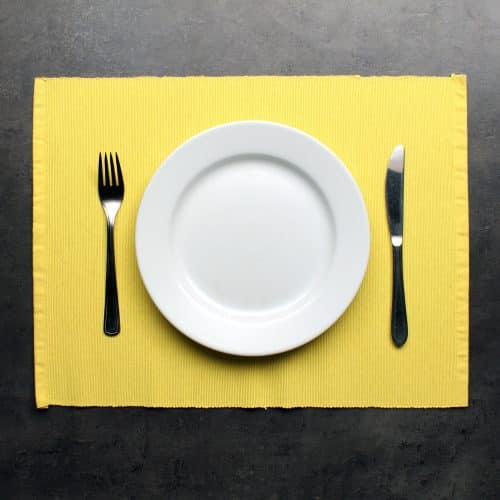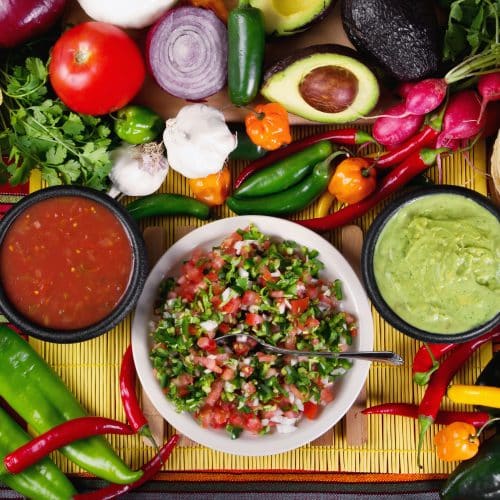
The resolutions have been made – perhaps you’ve vowed to save more money, fix up your house, become more organized and, of course, eat less (or more healthy) and exercise more. It probably seems like just about every person you’ve seen since the beginning of the New Year has stated that this will be the year they finally lose those extra 5, 10, 20, or more pounds. And, maybe you’ve been saying the same thing. Of course, your intentions are good but now that it’s a couple of months into the New Year some people may be thinking about jumping off the “healthier lifestyle” ship.
You started the year off right – counting calories, including more fruits and vegetables in your diet, choosing low-fat options, etc. But you just can’t get that nagging hunger pang to go away. Well, here are a few ideas to help keep the hunger at bay.
Become calorie and size wise.
In other words, eat more foods with less calories. For example, one-ounce of chips has 149 calories, whereas one-cup of raw veggies (such as broccoli) has just 24 calories. Even though you’re eating more (serving size wise), you’re still eating less calories.
Fill up on fiber.
Foods that contain fiber, such as fruits and vegetables, whole grain pastas and cereals, help keep you feeling fuller, longer.
Drink, drink, drink… the water.
Water helps you to feel full as well, which means you’ll be less likely to feel hungry. So, before you reach for that cookie, try a glass of water. You may find that you were really thirsty rather than hungry. Remember, there are a variety of no-calorie flavored waters (sweetened with sucralose) available if you want to switch up your routine.
Snack away.
Use snacks to your advantage. If you’re feeling hungry, grab a light, low-calorie snack. Don’t wait to eat until your ravenous – you’ll end up eating everything in sight. Try to eat smaller “meals” throughout the day. Some people find that eating six small meals works better than eating three large meals. Try to incorporate your favorite light products (sweetened with sucralose) into the diet as a way to enjoy sweet treats without the added calories…or guilt!
Eat protein and fat.
This isn’t a license to eat two chicken breasts at one sitting or your favorite pint of full-fat ice cream. But, if you find that you’re hungry soon after you eat, you may want to consider making some changes to your meals. For example, if you eat a plain bagel each morning, why not consider eating just half the bagel with one to two tablespoons of reduced-fat margarine, cream cheese or peanut butter? Or, if your lunchtime salad consists mainly of lettuce, tomatoes and some cucumber, why not also top it with lean chicken or tuna, kidney beans, chickpeas or even some chopped egg? When it’s snack time, go for apple slices with small amounts of reduced-fat cheese. Adding small amounts of fat and protein can help you feel satisfied longer. This is because fat and protein are digested less quickly than carbohydrates, which means you won’t feel as hungry as quickly. Remember, it’s still important to balance and count your calories. If you add something to your daily intake, be sure to account for it and balance your diet by eating less of something else.
Finally, if all else fails, increase your calorie content.
Increasing your diet by 100 to 200 calories will not sabotage your weight loss efforts. If you increase your calories a bit, you will still lose weight, it will just be at a slower rate – more like half a pound a week. And, as we all know, it’s not about how fast you lose the weight, what’s important is that you find ways to stick to your weight loss plan.




